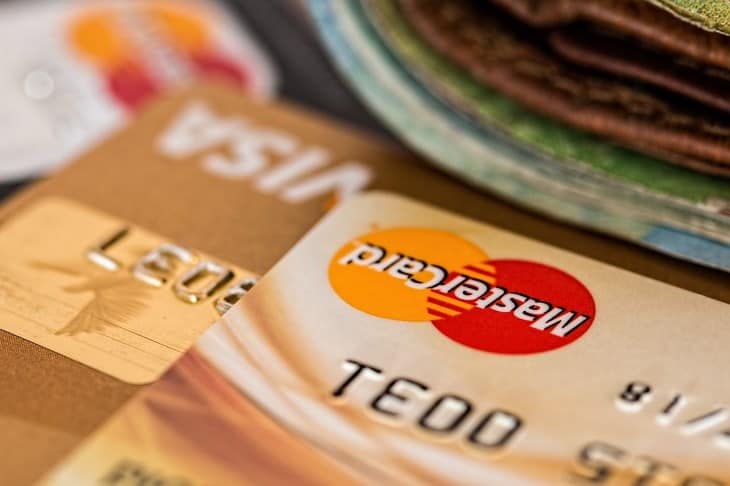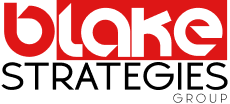
PPC Mistakes: Are You Wasting Clicks on Non-Buyers?
In the fast-evolving world of digital marketing, Pay-Per-Click (PPC) advertising remains a powerful tool for driving traffic and generating sales. However, a poorly optimized PPC campaign can drain your budget while failing to deliver meaningful results. Success hinges on one critical factor: displaying your ads to the right people at the right time.
Too many businesses view PPC as a quick path to fame and fortune, overlooking the strategic nuances required to attract actual buyers—not just curious browsers.
In 2025, with mobile usage dominating, AI-driven ad platforms, and increasingly savvy consumers, the stakes are higher than ever. This updated article explores two key mistakes that could be sabotaging your Google Ads campaign and offers actionable insights to ensure your clicks convert into customers.
Mistake 1: Are Your Ads Being Displayed at the Right Time?
Understanding the “Right Time” in a 24-Hour Day
Timing in PPC isn’t just about the clock—it’s about aligning your ads with your audience’s behavior. The most basic layer of timing is ensuring your ads appear when your target market is awake and active.
In 2025, with global audiences and 24/7 connectivity, this means leveraging time zone data and user activity patterns. For instance, if you’re targeting professionals with a B2B service, daytime hours during the workweek might be optimal. Conversely, a consumer-focused e-commerce brand selling fitness gear might see better results in the early morning or evening, when people are planning workouts.
Understanding your audience’s daily habits is key. Tools like Google Ads’ ad scheduling (now enhanced with AI-driven insights) allow you to analyze performance data and identify peak engagement times.
For example, a 2024 study by WordStream found that e-commerce conversion rates for apparel brands spiked between 6 PM and 9 PM, while B2B software companies saw higher click-through rates (CTRs) from 9 AM to noon. Knowing your industry and audience behavior can help you schedule ads when users are most likely to engage meaningfully.
The Deeper “Right Time”: The Buyer’s Journey
Beyond the 24-hour clock, the “right time” also refers to where your audience is in their buying cycle. Consumers in 2025 rely on search engines more than ever, with mobile devices acting as instant knowledge hubs. Whether it’s checking store hours, looking up product reviews, or comparing prices, people turn to Google for answers:
- Need to know if a local gym offers yoga classes? Google it.
- Curious about the specs of the latest smartphone? Google it.
- Want to find a restaurant for dinner tonight? Google it.
Smartphones have become the modern equivalent of a genie in a bottle, delivering information on demand. This behavior has profound implications for PPC.
A customer searching on their phone while standing in a store or browsing online is often at a critical decision point. They’re seeking information that will influence their purchase—right then and there. If your ad appears at this moment with a compelling offer (e.g., a discount code or free shipping), you’re far more likely to convert them.
However, timing within the buyer’s journey requires precision. A user searching early in their research phase (e.g., “best laptops 2025”) is less likely to buy immediately than someone searching with intent (e.g., “buy MacBook Pro M4 near me”). Failing to align your ads with the buyer’s stage can lead to wasted clicks.
Google Ads’ audience segmentation and AI-driven Smart Bidding can help target users based on their behavior, such as previous site visits or search history, ensuring your ads reach those closer to a purchase decision.
Mistake 2: Are Your Ads Reaching the Right People at the Right Time?
The Cost of Targeting Information Gatherers
Not every search signals a buyer. A common PPC pitfall is wasting budget on users who are merely seeking free information, not ready to purchase. For example, someone Googling “cute puppies” might be looking for pictures or videos, not intending to buy a pet. If your ad for a pet store appears, you’re spending money on a click that’s unlikely to convert.
This issue stems from a fundamental shift in how we access information. In the early 1990s, pre-internet, people visited libraries to read magazines like the Wall Street Journal or flipped through the Yellow Pages to find a plumber or locksmith.
By 2015, 90% of consumers were searching for these answers online, a trend that’s only grown. In 2025, with voice search and AI assistants like Google’s Gemini, users can ask anything, anytime—often on mobile devices. StatCounter reports that 60% of global web traffic now comes from mobile, amplifying the need for targeted PPC strategies.
The problem is that many PPC campaigns cast too wide a net, attracting “information gatherers” rather than buyers. If your business relies on sales—not just brand awareness—this can be a costly mistake. While information gatherers might eventually convert, they require more nurturing (e.g., through email campaigns or retargeting), whereas buyers are ready to act now. Distinguishing between the two is crucial for ROI.
Buyers vs. Information Gatherers: A Clear Example
Consider these two searches:
- Information Gatherer Search: “fuel efficient cars”
This is broad and exploratory. The user might be researching options—Honda, Tesla, or Toyota—without a clear intent to buy. They could be a student writing a paper, a car enthusiast, or someone years away from purchasing. - Buyer Search: “2025 Honda Civic Hybrid for sale in Austin, TX”
This is specific and intent-driven. The user has likely researched fuel-efficient cars, read reviews, and narrowed their choice to a 2025 Honda Civic Hybrid. They’re ready to buy, and they’re looking for a local dealer.
The difference is stark. The first user might click your ad out of curiosity, costing you money without a sale. The second user is a prime candidate for conversion—if you’re a car dealership in Austin, this click could lead to a sale. Wasting budget on the first type of user means less money to target the second, where your ROI is higher.
Why This Matters for Your Business
If your business model depends on paying customers, not just site visitors, optimizing for buyers is non-negotiable. While information gatherers can be educated and converted over time, it’s a longer, costlier process.
A buyer, on the other hand, is already primed to act. In 2025, with rising ad costs—Google Ads CPCs have increased by 15% since 2023, per WordStream—every click counts. Targeting the wrong audience can burn through your budget, leaving you with little to show for it.
Moreover, modern consumers are comparison-savvy. A 2024 Adobe study found that 70% of online shoppers check reviews or compare prices on their phones before buying. If your ad targets someone early in this process, they might click, browse, and then leave to continue researching elsewhere. A well-optimized campaign ensures your ads reach users who are ready to commit, maximizing your conversion rate.
How to Optimize Your PPC Campaign for Buyers
1. Invest Time in Research and Setup
A successful PPC campaign isn’t a “set it and forget it” endeavor. While you can create a basic campaign in 20 minutes by clicking through Google Ads’ default settings, this often leads to wasted spend. A high-performing campaign requires hours—or even days—of preparation:
- Keyword Research: Use tools like Google Keyword Planner or SEMrush to identify high-intent keywords. Focus on long-tail keywords (e.g., “buy iPhone 15 Pro Max 512GB”) over broad terms (e.g., “new iPhone”).
- Negative Keywords: Exclude terms that attract information gatherers. For example, add “free,” “DIY,” or “how to” as negative keywords if you’re selling a product or service.
- Audience Segmentation: Leverage Google Ads’ in-market audiences and custom intent audiences to target users who’ve shown purchase intent, such as searching for specific products or visiting competitor sites.
2. Understand Your Industry and Buyers
Every industry has unique buying patterns. A luxury jewelry brand might target evening hours when users are browsing for gifts, while a SaaS company might focus on weekdays during business hours. Dive into your customer data—Google Analytics 4 can reveal when your conversions peak—and align your ad schedule accordingly. Additionally, understand why your customers buy. Are they driven by price, convenience, or urgency? Tailor your ad copy and landing pages to address these motivations.
3. Use AI and Automation Wisely
Google Ads in 2025 offers powerful AI tools like Performance Max and Smart Bidding, which optimize for conversions based on user signals. However, these tools need clear goals and data to work effectively. Set up conversion tracking (e.g., purchases, form submissions) and feed Google Ads with historical data to improve its targeting. AI can also predict the best times to show ads, but always monitor performance to ensure it aligns with your goals.
4. Craft Buyer-Focused Ad Copy
Your ad copy should speak directly to buyers. Highlight urgency (“Limited Stock”), value (“Free Shipping Today”), or specificity (“2025 Honda Civic Hybrid in Austin”). Use dynamic keyword insertion to match the user’s search term, making your ad feel tailored. Pair this with a landing page that delivers exactly what the ad promises—no bait-and-switch.
5. Monitor and Refine
PPC isn’t a one-time setup. Regularly review your campaign performance in Google Ads’ Reports tab. Look at metrics like conversion rate, cost per conversion, and search terms report to identify wasted spend.
If you’re attracting too many information gatherers, adjust your keywords, audience targeting, or ad schedule. A/B test ad copy and landing pages to optimize for conversions.
Conclusion: Stop Wasting Clicks, Start Winning Buyers
PPC advertising in 2025 offers immense potential, but only if you target the right people at the right time. Mistargeted ads—whether shown at the wrong hour or to the wrong audience—can drain your budget while attracting non-buyers.
By focusing on high-intent users, aligning your ads with the buyer’s journey, and investing time in research and optimization, you can turn clicks into customers. Don’t fall into the trap of assuming PPC is a quick fix. Take the time to build a campaign that connects with buyers, and you’ll avoid the false conclusion that PPC doesn’t work. It does—but only when done right.

